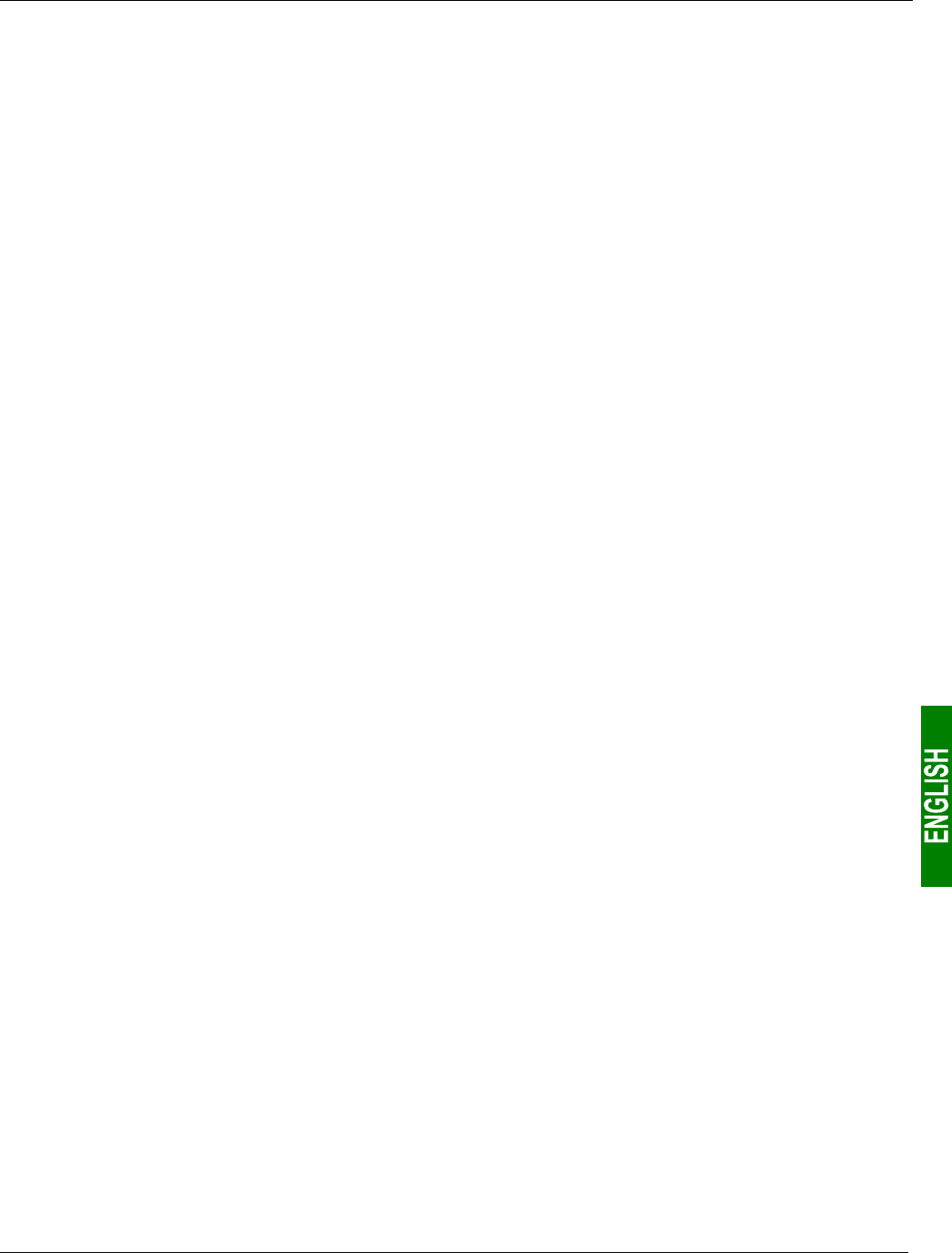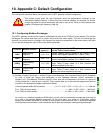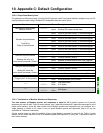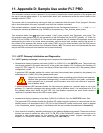
103
11. Appendix D: Sample Use under PL7 PRO
• The second frame, “Parameter Address,” allows you to set the address of the parameter to read/write.
When the “SEND command” button is being pushed, the value currently set in this frame is copied into the
“Read parameter address” field of the reading command (%QW4.0.10)
or into the “Written parameter
address” field of the writing command (%QW4.0.13).
• The third frame, “Value for WRITING,” will only be used if the “Parameter Writing” command is to be issued.
The transfer of any value set in this frame into the “Written parameter value” field of the writing command
(%QW4.0.14) is done whenever the “SEND command” button is being pushed, provided the “Parameter
Writing” box is checked.
• The fourth frame, “Command,” allows you to select the command that will be issued for the aperiodic
parameter reading/writing service: read command or write command. Only one box can be checked at any
given time.
• The “SEND command” button triggers the update of the gateway’s periodic output data (%QW4.0.9 à
%QW4.0.14) in such a way that the gateway will issue the command that matches the settings and values
from the frames previously described. The reading command is issued using the %QW4.0.9 to %QW4.0.11
outputs and the writing command is issued using the %QW4.0.12 to %QW4.0.14 outputs. All these updates
are performed in the
“Pkw_service” program. A new command is issued and sent each time a modification
is brought to the value of the MSB byte (for reading) or to the value of the LSB byte (for writing) of the
%QW4.0.15 output.
E.g. In the example displayed above, the frames are used to issue a command intended to read (16#03, i.e.
the function code that stands for the “Read Holding Registers” Modbus function) the value of the register
no. 455 (address = 16#01C7) on the TeSys U motor starter no. 3 (16#03). The number of read parameters
is necessarily equal to 1 (16#0001), but this data is still updated by the
“Pkw_service” program because it
is part of the Modbus command frame the gateway will issue.
• The next four frames, located beneath and apart from the other ones, are intended to diplay the output data,
transmitted to the gateway so that it will issue the corresponding Modbus query, the input data, as received
by the gateway from one of its Modbus slaves in response to this query, the counters used by the gateway
to trigger the emission of a command, and the counters updated by the gateway in order to mark the
reception of a response. The upper frame is dedicated to the reading command (%QW4.0.9 to %QW4.0.11
for the query sent by the gateway and %IW4.0.9 to %IW4.0.11 for the response sent back by the Modbus
slave) and the middle frame is dedicated to the writing command (%QW4.0.12 to %QW4.0.14 for the query
sent by the gateway and %IW4.0.12 to %IW4.0.14 for the response sent back by the Modbus slave).
Finally, the lowest two frames display the counters (or “Trigger bytes”) associated to these queries and
responses. The queries counters are transmitted to the gateway using the %QW4.0.15 output, whereas the
responses counters are read using the %IW4.0.15 input. The contents of these two words is broken down in
order to isolate the values of these 8-bit counters.
The
example located at the top of the next page follows the previously described example, as the output
and input data for the aperiodic parameter reading/writing service match the settings and values of the other
frames. Here, the value of the parameter is equal to 16#02C3. The middle frame has no valid data because
the gateway has not yet been requested by the Profibus-DP master to send any write command.


















